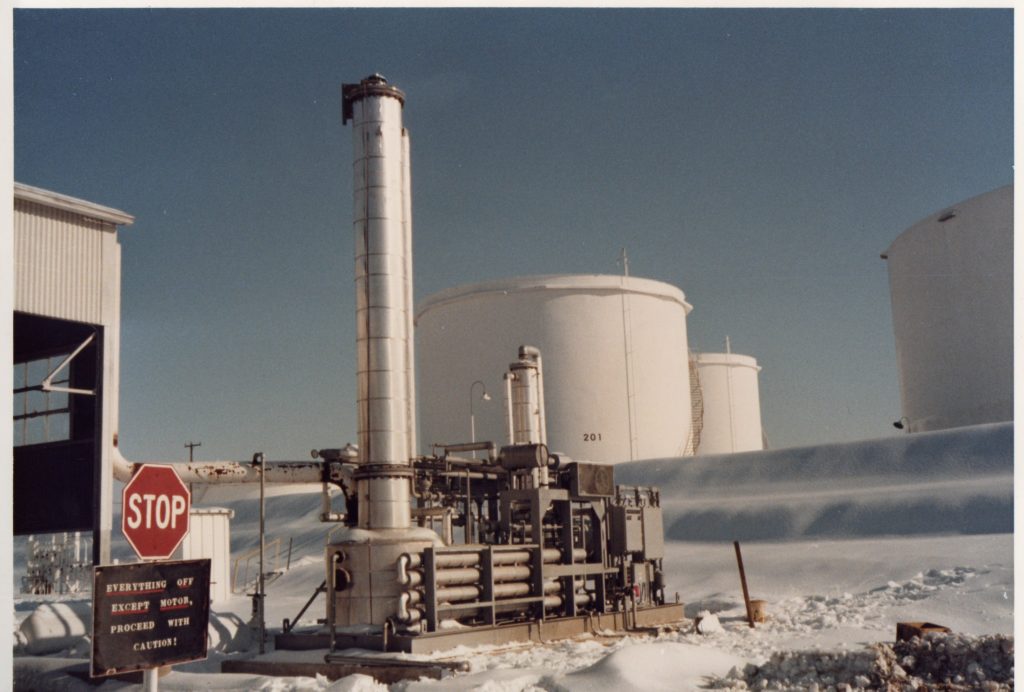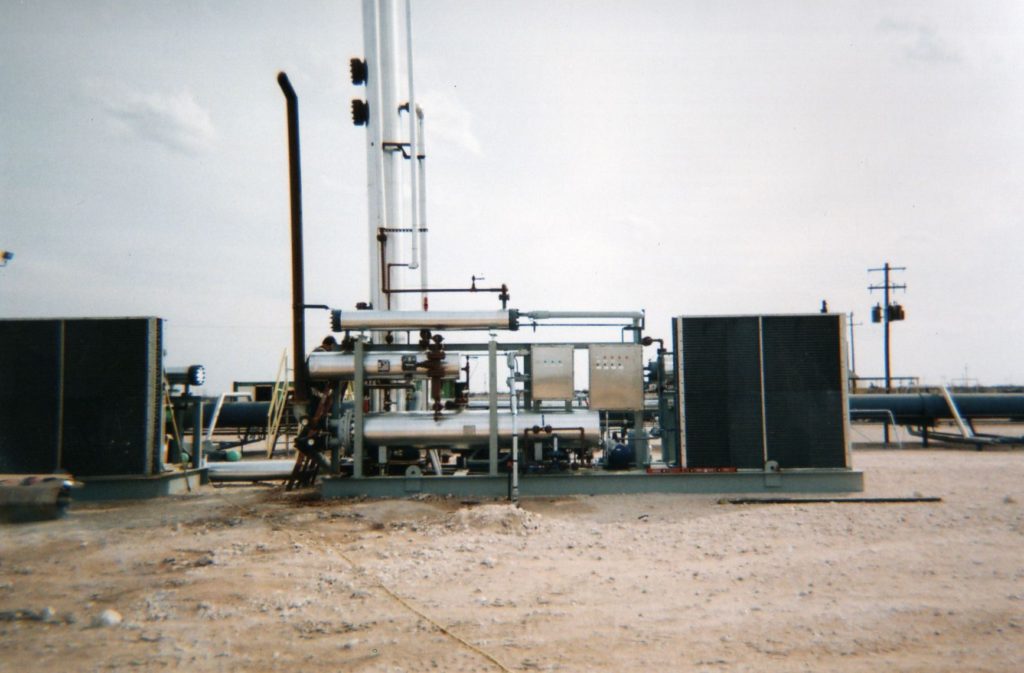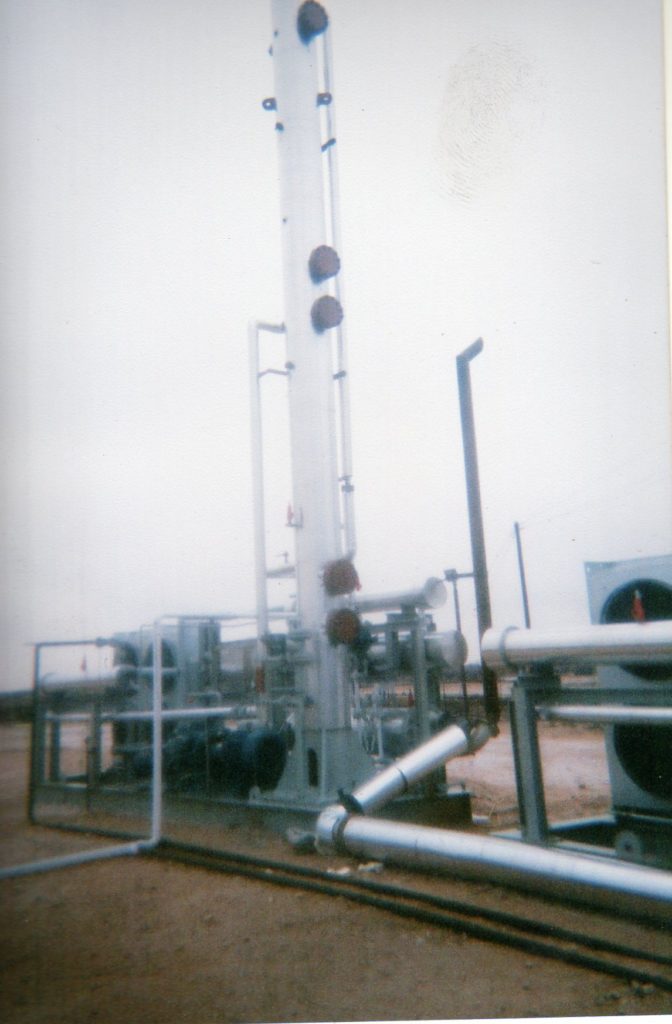
Acid Gas Removal systems involve removal of inert gasses such as carbon dioxide, hydrogen sulfide, and nitrogen from unprocessed natural gas. These must be removed prior to use or sale of the natural gas to meet standards of less than 4% inert gases. Acid gases such as carbon dioxide (CO2) and hydrogen sulfide (H2S) are corrosive when water molecules are present and represent the major source of maintenance problems in pipelines. Acid gas removal plants are essential to natural gas processing and transportation and are one of the major parts of natural gas processing equipment manufactured.
Acid gas removal using amine plants is the most widely accepted process, but other types of systems are also being used.
- Amine sweetening employs a high-pressure absorber contactor, low-pressure stripper, high-pressure pumps, cross heat exchangers, reboilers, amine reclaimers, etc. MEA, DEA, DGA, MDEA and mixed amines comprise the major ethanolamines that are used. Each of the ethanolamines has unique process envelopes of pressure, temperature and concentration of acid gas. Each have their own energy efficiencies. There are primary, secondary, and tertiary amines that have special acid gas selectivity and energy requirements. Each of the amines has unique corrosion tendencies. Hydrogen sulfide removal in many cases requires selective removal and tertiary amines such as MDEA. Amine-treating equipment can require expensive metallurgy to ensure the longevity of the equipment.
- Molecular sieves use certain selectively designed zeolites to capture CO2. The adsorption rate is very small. In some cases pressure or vacuum swing adsorption is the preferred regeneration method for the molecular sieve.
- Membrane systems have been used for bulk removal of CO2, which has a relative permeability of 10-14 times that of methane. To achieve less than 2% CO2 in the sales gas it is necessary to stage and recycle gas. This can result in high operating costs and excessive capital due to the recompression requirement. The optimal process may be a combination of an amine system and membrane system. Membranes definitely have a legitimate use in bulk CO2 removal.
Sep-Pro designs and manufactures amine plants as well as the process design. Being an ASME code facility, we build our own contactor and stripper columns, heat exchangers, and fin fans. We also build our own electrical and PLC systems.

Advantages of Sep-Pro Acid Gas Removal Systems
- We can match process requirements with the appropriate amine
- We can build the corresponding dehydration units
- Matching of metallurgy with the corrosion prevention needs
- Customization of instrumentation
- We build our own vessels, heat exchangers, and air coolers for more competitive pricing
For more information about Sep-Pro Acid Gas Removal systems, contact us today.

Certifications
Sep-Pro Systems, Inc. maintains certification with the American Society of Mechanical Engineers (ASME) for “U” stamped vessels and the National Board for “R” stamped repairs.

